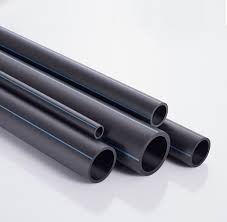Nov . 01, 2024 01:09 Back to list
40mm PPR Pipe Manufacturing Process and Quality Standards Overview
The Rising Popularity of 40mm PPR Pipes A Factory Perspective
In recent years, the demand for PPR (Polypropylene Random Copolymer) pipes has surged, particularly for the widely used 40mm diameter variant. These pipes are increasingly favored in various industries due to their exceptional properties and versatility. This article will explore the characteristics, manufacturing processes, and advantages of 40mm PPR pipes from a factory perspective.
Characteristics of 40mm PPR Pipes
40mm PPR pipes are known for their durability, resistance to corrosion, and excellent thermal insulation properties. The material is inherently resistant to chemicals, which makes it suitable for a myriad of applications ranging from water supply systems to industrial processes. Additionally, PPR pipes can handle high temperatures, often exceeding 90°C, without compromising their structural integrity. This characteristic makes them ideal for hot water systems and heating applications.
Manufacturing Process
The manufacturing of 40mm PPR pipes begins with the selection of high-quality raw materials. The primary component, polypropylene random copolymer (PPR), is fed into an extruder where it is heated and melted. Once in a molten state, it is shaped using a die that produces the desired pipe diameter and wall thickness.
After extrusion, the newly formed pipe undergoes a series of cooling and calibration processes to ensure precise dimensions. Quality control is a critical part of production; pipes are tested for strength, flexibility, and resistance to deformation. Factories employ advanced technology, such as automated testing systems, to ensure that every batch meets industry standards.
40mm ppr pipe factory

Advantages of 40mm PPR Pipes
The popularity of 40mm PPR pipes can be attributed to several key advantages. First, their lightweight nature facilitates easier handling and installation. This is particularly beneficial in large-scale construction projects, where labor costs and time efficiency are paramount.
Second, PPR pipes are considered environmentally friendly. They are 100% recyclable, which minimizes waste and promotes sustainable practices. Furthermore, PPR pipes contribute to energy savings due to their excellent thermal insulation properties, which reduce heat loss in hot water systems.
Another significant advantage is the longevity of PPR pipes. With a lifespan of over 50 years under normal conditions, they provide a cost-effective solution over time. Unlike traditional materials such as metal or PVC, they do not corrode or degrade, ensuring a reliable and safe water supply.
Conclusion
As the construction and plumbing sectors continue to grow, the factory production of 40mm PPR pipes plays a crucial role in meeting the rising demand. With their unique characteristics, efficient manufacturing processes, and several advantages, it's no surprise that PPR pipes are becoming the preferred choice for many applications. The commitment to quality and sustainability in the production of these pipes not only supports current industry needs but also aligns with future environmental goals. As we move forward, the role of factories producing high-quality 40mm PPR pipes will undoubtedly remain significant in shaping a more efficient and sustainable infrastructure.
-
High-Quality PVC Borehole Pipes Durable & Versatile Pipe Solutions
NewsJul.08,2025
-
High-Quality PVC Perforated Pipes for Efficient Drainage Leading Manufacturers & Factories
NewsJul.08,2025
-
High-Quality PVC Borehole Pipes Durable Pipe Solutions by Leading Manufacturer
NewsJul.08,2025
-
High-Quality PVC Borehole Pipes Reliable PVC Pipe Manufacturer Solutions
NewsJul.07,2025
-
High-Quality UPVC Drain Pipes Durable HDPE & Drain Pipe Solutions
NewsJul.07,2025
-
High-Quality Conduit Pipes & HDPE Conduit Fittings Manufacturer Reliable Factory Supply
NewsJul.06,2025

